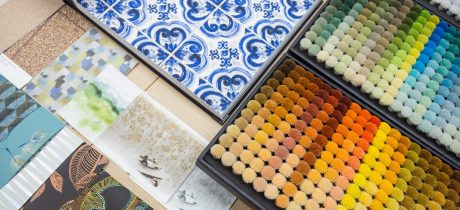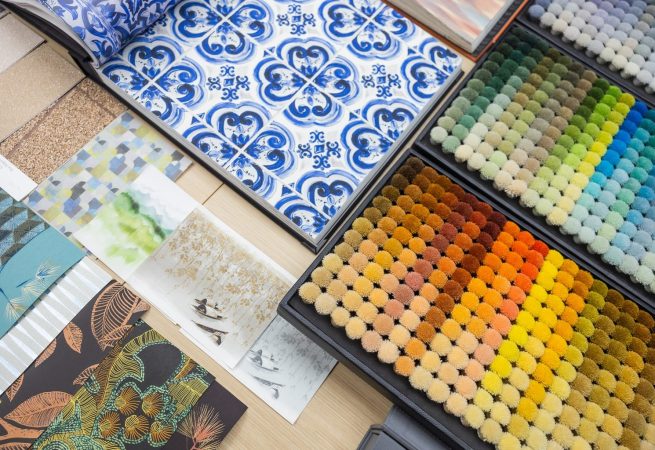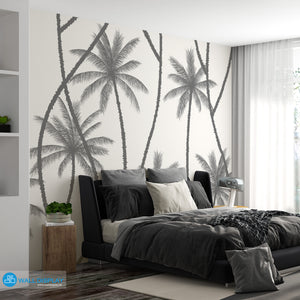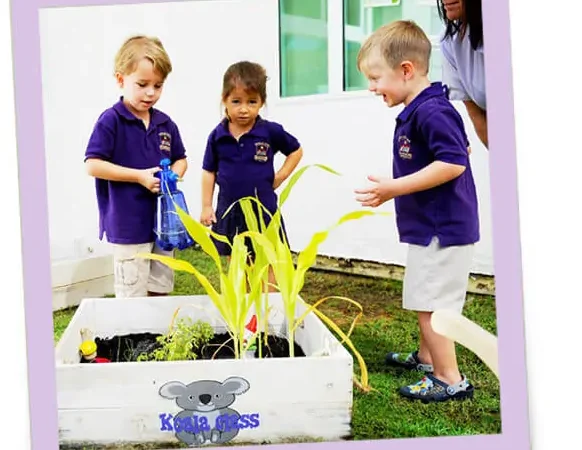

5 Tools Every Homeowner Needs For Electrical Repairs
Handling electrical repairs at home can save time and money, but only if you have the right tools on hand. While some electrical issues may require professional help, basic repairs and maintenance tasks can often be completed by homeowners with the proper equipment. For those who feel confident in tackling these tasks, hiring an electrical maintenance company in UAE may be unnecessary. Below are some essential tools every homeowner should have for electrical repairs.
Multimeter
A multimeter is an essential tool for diagnosing electrical problems. This versatile device allows homeowners to measure voltage, current, and resistance in various components of the electrical system. With a multimeter, you can easily check if an outlet is functioning properly, if a circuit is carrying the correct voltage, or if wires are safely grounded. It’s essential for troubleshooting issues like dead outlets, tripped breakers, or faulty switches.
Insulated screwdrivers
Electrical screwdrivers are designed with an insulated handle, providing added protection when working with live wires. They are used for tightening or loosening screws in outlets, switches, and light fixtures. Having a set of insulated screwdrivers in various sizes ensures that you can handle different electrical components safely. They help to prevent accidental electrical shocks by reducing the risk of contact with live parts.
Wire cutters and strippers
Wire cutters are necessary for cutting wires to the appropriate length when doing electrical work. Wire strippers, instead, allow you to safely remove the insulation from the ends of wires without damaging the wire itself. Whether you’re replacing an outlet or installing a new light fixture, these tools are important for preparing and connecting wires properly.
Voltage tester
A voltage tester is a simple yet essential tool for checking if a wire or outlet is live. It helps ensure that you are working with de-energized wires before starting any repair or installation work. Voltage testers come in different forms, including pen-style testers that light up when they detect current. This tool gives peace of mind, preventing dangerous electrical shocks during DIY tasks.
Electrical tape
Electrical tape is a must-have for insulating and securing wires during electrical repairs. It can also be used to repair small sections of damaged wire insulation, ensuring the electrical system is safe. Ensure to use high-quality electrical tape that is rated for the appropriate voltage, and always wrap it tightly to prevent exposed wires from causing shorts or other hazards.

How Does API Q1 Consultancy Differ From Others?
API Q1 consultancy is highly specialized and focuses on providing expert guidance for achieving certification in quality management systems within the oil and gas industry. What sets API Q1 consultancy apart from others is its detailed and industry-specific approach to ensuring compliance with rigorous standards. Working with reliable API Q1 consultancy services Dubai ensures your business meets the highest quality and operational requirements, making it an invaluable partner in achieving success.
Industry-specific expertise:
API Q1 consultancies are specialized in providing services tailored to the oil and gas sector. Unlike general consultancy services, API Q1 consultants focus specifically on the unique requirements of the oil and gas industry. They understand the challenges, regulations, and standards that affect companies operating in this field. Their expertise in handling API Q1 certification processes ensures that clients can achieve and maintain the certification smoothly and efficiently.
Detailed knowledge of API Q1 standards:
One of the defining features of API Q1 consultancies is their in-depth knowledge of the specific standards associated with API Q1 certification. This certification is essential for companies involved in manufacturing, designing, and providing services related to the oil and gas industry. API Q1 consultancies have a profound understanding of the intricate details of the standard, including the quality management principles, product lifecycle management, and regulatory compliance. Their deep knowledge ensures businesses avoid common pitfalls and meet certification requirements.
Focus on risk management and compliance:
API Q1 consultancy services focus on risk management and compliance to ensure businesses can mitigate operational risks while adhering to industry standards. API Q1 requires rigorous attention to detail, and consultants guide businesses through risk assessments and compliance checks. The consultants help identify hazards, recommend safety measures, and ensure compliance with safety protocols throughout the entire operation. This proactive approach to risk management sets API Q1 consultancies apart from other types of consultancy services.
Tailored documentation support:
API Q1 certification requires the development and maintenance of an inclusive set of documents. API Q1 consultancies assist businesses in creating, reviewing, and improving documentation to ensure it meets the certification requirements. They help organizations build robust quality management systems, create effective processes, and implement procedures for quality control. Documentation support is key to achieving and maintaining API Q1 certification, and the specialized nature of these consultancies ensures accuracy and completeness.
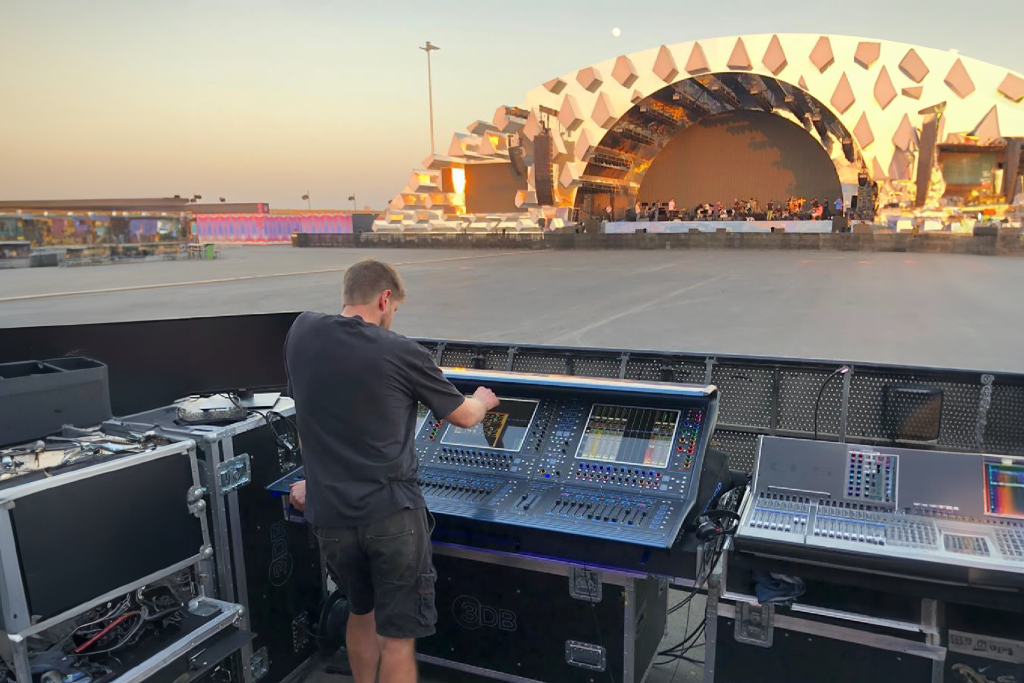
Why Your Team Needs A Good AV System For Collaboration
Effective collaboration is key to success. A high-quality audiovisual (AV) system can significantly improve the way teams communicate and work together. By integrating modern technology into your conference room, you ensure that your team can collaborate smoothly, even with remote participants. Consulting conference room AV specialists ensures the system is tailored to your needs.
Improved communication:
Clear communication is vital for productive teamwork, especially in meetings. A good AV system ensures that every voice is heard and every presentation is visible, regardless of the room’s size or the number of participants. Features such as high-quality microphones and speakers eliminate audio issues, while high-definition screens improve visual clarity. This result in more effective communication and fewer misunderstandings during discussions.
Streamlined virtual collaboration:
As remote work becomes more common, your team will likely need to collaborate with colleagues, clients, or partners from different locations. A reliable AV system that integrates smoothly with video conferencing platforms (such as Zoom or Microsoft Teams) ensures that virtual meetings run smoothly. Clear audio and video feed help remote participants feel more connected, promoting active engagement and collaboration.
Improved presentations and brainstorming:
A strong AV system improves your ability to present information effectively. Whether it’s a client pitch, project update, or brainstorming session, a quality audio-visual setup makes sharing content easier. With wireless screen sharing, participants can instantly present ideas from their devices, facilitating smoother, more collaborative meetings. Interactive whiteboards can also be used for brainstorming, allowing ideas to be shared and developed in real-time.
Increased productivity:
An effective AV system reduces the likelihood of technical difficulties, saving time and frustration. Instead of struggling with outdated or incompatible equipment, your team can focus on the task at hand. Quick setup and smooth operation improve productivity, ensuring that meetings stay on track and that time isn’t wasted fixing technical issues.
Better collaboration with remote teams:
When your team is spread across multiple locations, having a robust AV system ensures that everyone has an equal opportunity to contribute. Remote workers can easily participate in discussions, see presentations clearly, and share their own content, bridging the gap between in-office and remote employees.
A good AV system is an essential tool for any collaborative team. By investing in quality equipment and seeking advice from conference room AV specialists, you can significantly improve the effectiveness and efficiency of your team’s collaboration. With smooth communication and improved functionality, your team can work together more productively, regardless of location.
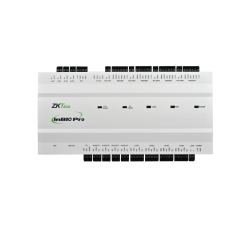
5 Types Of Door Access Control Technologies
Implementing the right door access control technology is essential for securing homes and workplaces. These technologies offer varying levels of sophistication and features, catering to different security needs. From traditional systems to advanced biometric solutions, choosing the right option ensures convenience and protection. By exploring these options, you can make informed decisions for your security infrastructure upgrade with access control system UAE.
Keypad entry systems:
Keypad entry systems are one of the simplest and most widely used access control methods. Users enter a PIN code on a numeric keypad to unlock doors. These systems are cost-effective and easy to install, making them a popular choice for small businesses and residential properties. However, regular updates of codes are essential to maintain security.
Card-based access control:
Card-based systems use proximity cards or smart cards that users swipe or tap on a card reader to gain entry. These systems are common in office buildings and schools due to their ease of use and scalability. Lost cards can be deactivated and replaced, offering flexibility while reducing risks of unauthorized access.
Biometric access control:
Biometric systems use unique physical characteristics, such as fingerprints, facial recognition, or iris scans, to grant access. These technologies provide a high level of security as biometric data is nearly impossible to replicate. Biometric access control is often used in high-security areas like research labs or government facilities.
Mobile-based access control:
Mobile access control systems use smartphones as credentials. Users install an app or use NFC (Near Field Communication) or Bluetooth to unlock doors. This method offers unparalleled convenience, especially in smart buildings, as it eliminates the need for physical keys or cards. Remote management capabilities are an added advantage for administrators.
Cloud-based access control:
Cloud-based systems store access data and management tools online, allowing remote access and control. Administrators can manage permissions, track entry logs, and update credentials from anywhere. This modern solution is ideal for large organizations with multiple locations, offering scalability and real-time insights into security events.
Selecting the right door access control technology depends on the level of security, ease of use, and specific requirements of the space. Each system offers unique features, allowing you to tailor your choice to fit your needs perfectly. With the right technology in place, safeguarding property becomes both efficient and effective.

What Are The Best Resources For Learning Forex Trading?
Learning Forex trading can be a rewarding experience, but it requires time, effort, and the right resources. Whether you’re a beginner or looking to refine your skills, UAE best online trading platform can provide essential tools and educational materials. To help you steer the complexities of Forex trading, here are some of the top resources for learning and improving your trading strategies.
Online courses and educational websites:
One of the best ways to start learning Forex trading is through online courses and educational websites. Websites such as BabyPips, Investopedia, and FX Academy offer inclusive guides, tutorials, and courses suitable for beginners and advanced traders. These platforms cover everything from basic terminology to complex strategies, and many of them offer free content. Some platforms also offer paid, more in-depth courses that allow for a more tailored learning experience.
Webinars and live training sessions:
Webinars and live training sessions are great resources to learn from experienced traders in real-time. Many brokers and Forex educators offer free or paid webinars on various topics, such as market analysis, trading psychology, and risk management. Participating in live training sessions allows you to ask questions and get immediate feedback from experts. This interactive learning experience can be invaluable as it helps you understand how professional traders approach the market.
Trading books:
There are many excellent books available that can deepen your understanding of Forex trading. Popular titles include “Trading in the Zone” by Mark Douglas, which focuses on trading psychology, and “The Little Book of Currency Trading” by Kathy Lien, which covers both fundamental and technical analysis. These books are written by experienced traders and offer practical advice, strategies, and insights that can help you steer the Forex market more effectively.
YouTube channels and blogs:
YouTube is a great platform for learning Forex trading. Many traders and educators offer free video tutorials, market analysis, and trading tips on their channels. Channels like “The Trading Channel” and “UKspreadbetting” provide valuable insights into technical analysis, chart patterns, and risk management techniques. Additionally, following Forex trading blogs can help you stay updated on market trends and strategies, giving you a fresh perspective on various trading approaches.
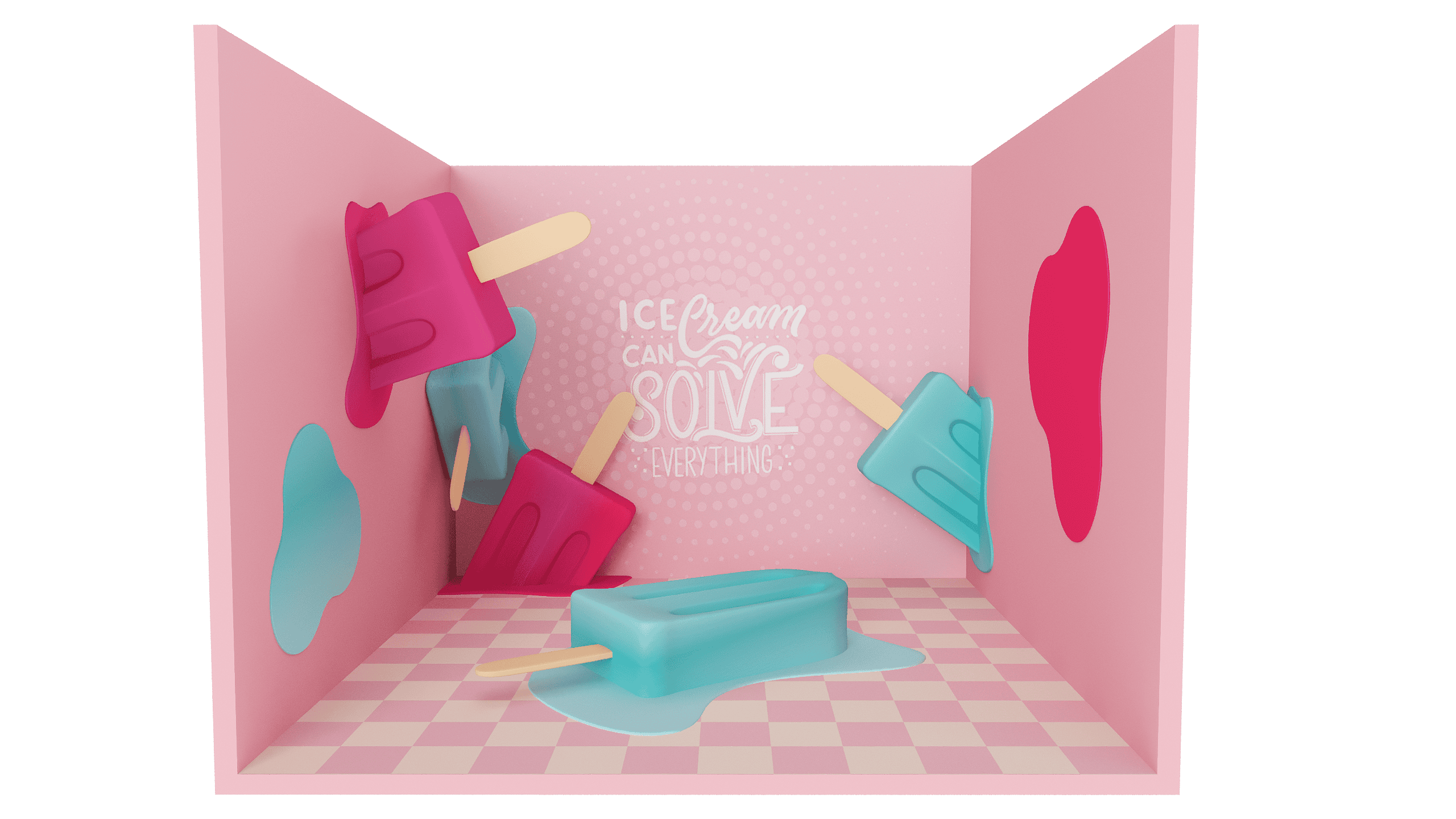
Best Practices For Global Event Coordination
Coordinating a global event requires planning, effective communication, and a deep understanding of cultural nuances. Whether you are organizing an international conference, a product launch, or a large-scale exhibition, the logistics can quickly become complex. Successful global event coordination involves careful consideration of time zones, language barriers, local regulations, and much more. To ensure a smooth experience for attendees across various locations, here are some best practices to follow. As you plan global event planning and marketing, it’s essential to adopt these strategies for a flawless execution.
Start with a clear, detailed plan:
The first step in successful global event coordination is creating an inclusive event plan. This should outline every aspect of the event, including objectives, timelines, budgets, and logistics. Ensure that all stakeholders are aligned on goals and expectations, and make use of tools like project management software to track tasks and deadlines. A well-structured plan will keep the event on track and allow for effective delegation of responsibilities, which is especially important when coordinating multiple teams across different regions.
Understand cultural differences:
One of the most important aspects of global event coordination is to understand and respecting cultural differences. Each country and region has its own set of social customs, etiquette, and preferences. For instance, the way business is conducted in Japan may differ significantly from that in the United States or Europe. Tailoring aspects of the event—such as marketing materials, food, or entertainment—according to regional tastes will show respect for local cultures and create a more inclusive atmosphere. This attention to detail can help avoid misunderstandings and ensure that your event resonates with a diverse audience.
Utilize technology for smooth communication:
Effective communication is the cornerstone of global event coordination. With teams possibly scattered across different continents, utilizing technology for real-time collaboration is important. Video conferencing tools, messaging platforms, and shared document systems help keep everyone on the same page, ensuring smooth communication between different teams and stakeholders. Additionally, ensure that all event details are accessible in multiple languages and that translation services are available for both virtual and in-person attendees.
Manage logistics and time zones carefully:
Coordinating logistics on a global scale involves dealing with different time zones, transportation networks, and local venues. Consider the timing of virtual sessions to accommodate participants from multiple regions, ensuring that key sessions are held at times that are convenient for the largest number of attendees. Additionally, when selecting venues or coordinating travel, consider regional transport networks, accessibility, and even local weather patterns. This careful management of logistics is important for ensuring a smooth event experience for everyone involved.
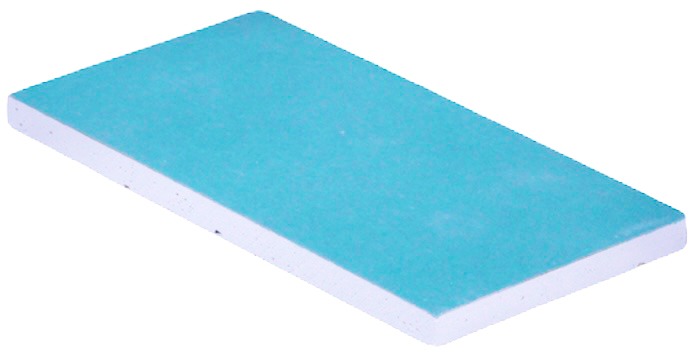
DIY Ceiling Tile Projects to Enhance Your Interior Decor
Ceiling tiles are a popular and practical way to enhance the interior decor of any space. While there are many ready-made options available in the market, DIY ceiling tile projects offer a more personalized touch to your home or office.
In this guide, we will explore various DIY ceiling tile projects that you can easily do at home with minimal tools and materials.
Materials Required
- Ceiling tiles
- Measuring tape and pencil
- Adhesive
- Utility knife
- Paint and paintbrushes
- Ladder or step stool
Now that we have our materials ready, let’s explore some creative DIY projects using ceiling tiles.
1. Faux Tin Ceiling
Tin ceiling tiles are known for their vintage and industrial look. However, they can also be quite expensive. With this DIY project, you can achieve the same effect at a fraction of the cost.
Start by measuring your ceiling and purchasing enough faux tin tiles to cover the desired area. Next, use adhesive to attach the tiles to your ceiling, making sure they are evenly spaced and level.
Once the tiles are in place, you can leave them as is for a classic look or paint them in any color of your choice for a more modern twist. You can also add a metallic sheen by using metallic spray paint.
2. Fabric-Covered Ceiling
This DIY project is perfect if you want to add texture and warmth to your ceiling. First, measure and cut pieces of fabric that are slightly larger than your ceiling tiles.
Next, apply adhesive on the back of each tile and carefully press it onto the fabric, making sure there are no air bubbles. Trim any excess fabric and let the tiles dry completely.
Now, install the fabric-covered tiles on your ceiling using adhesive or a staple gun. You can also add beadboard trim around the edges of each tile for a more polished look.
3. Painted Pattern Ceiling
If you have basic white ceiling tiles, you can easily transform them into a statement piece by painting a pattern on them. Some popular options include chevron, herringbone, or Moroccan-inspired designs.
Start by sketching out your desired pattern on paper to use as a guide. Then, using painter’s tape, mark off the areas to be painted on each tile. Use paint in complementary colors to fill in the pattern, and let it dry completely before removing the tape.
For an added touch, you can also paint the edges of each tile in a contrasting color. This DIY project is a great way to add personality and visual interest to any room.

Essential Tools and Equipment for Quality Structural Fabrication
Structural fabrication is the process of creating metal structures by cutting, bending and assembling structural steel components. This process requires a variety of tools and equipment to ensure accuracy, precision and efficiency in the fabrication process. In this article, we will discuss the essential tools and equipment needed for quality structural fabrication.
Cutting Tools
- Saw:
A saw is an essential tool used for straight cuts on large pieces of metal. It can be hand-held or mounted on a table depending on the type of saw and the size of the material being cut. Some common types of saws used in structural fabrication include band saw, cold saw, and circular saw.
- Plasma Cutter:
A plasma cutter is a high-powered cutting tool that uses a jet of hot plasma to cut through metal. It is ideal for cutting thicker materials or materials with irregular shapes.
- Oxy-fuel Torch:
An oxy-fuel torch is another popular cutting tool that uses a combination of oxygen and fuel gas to create a high-temperature flame for cutting through metal. It is commonly used for precision cuts on thinner materials.
Bending Tools
- Press Brake:
A press brake is a machine that uses a hydraulic or mechanical press system to bend metal sheets into various shapes and angles. It is ideal for producing precise bends on large volumes of material.
- Roller Bender:
A roller bender, also known as a roll bender, is a tool used for curving flat metal sheets into cylindrical or conical shapes. It works by passing the sheet through multiple rollers with gradually increasing pressure.
- Tube Bender:
As the name suggests, a tube bender is used specifically for bending hollow metal tubes into various angles and curves. It can be operated manually or hydraulically, depending on the size and complexity of the bends.
Welding Tools
- MIG Welder:
A MIG welder, also known as a wire feed welder, uses a wire electrode fed through a welding gun to create an electric arc for fusing two metal pieces together. It is ideal for fast and efficient welding on thinner materials.
- TIG Welder:
A TIG welder, also known as a gas tungsten arc welder, uses a non-consumable tungsten electrode to create an electric arc for melting and joining metal pieces together. It is commonly used for precision welding on thicker materials.
- Stick Welder:
A stick welder, also known as a shielded metal arc welder, uses a consumable stick electrode coated in flux to join metal components together. It is suitable for outdoor or remote welding applications.
With these tools, skilled welders can create strong and durable connections between metal components, ensuring the structural integrity of the fabricated product.

Steps To Organize A Drawing Class For Kids
Organizing a drawing class for kids can be a rewarding experience that nurtures creativity and self-expression. Whether you are an art teacher, a parent, or an art enthusiast looking to share your skills, creating an engaging and fun drawing class requires thoughtful planning and preparation. Here’s a step-by-step guide to help you organize successful drawing classes for kids in Dubai.
Define your class objectives:
Before you start planning your class, it’s important to define what you want the kids to achieve by the end of the course. Are you aiming to teach basic drawing skills, introduce them to different art mediums, or focus on a specific theme like animals or nature? Having a clear objective will help you structure your lessons and choose appropriate activities. It’s also important to consider the age group you’re targeting, as this will influence the complexity of the tasks and the teaching methods you use.
Choose a right location:
Selecting the right location is important for a successful drawing class. If you’re conducting the class at a school or community center, ensure that the space is child-friendly, well-ventilated, and has plenty of natural light. The area should be spacious enough to accommodate all the participants comfortably and have tables and chairs suitable for drawing. If you’re hosting the class at home, set up a dedicated space free from distractions, with easy access to art supplies and materials.
Gather art supplies and materials:
Once you’ve decided on the location, the next step is to gather all the necessary art supplies and materials. For a basic drawing class, you’ll need paper, pencils, erasers, colored pencils, markers, and perhaps some crayons. Depending on the class’s focus, you may also want to include other materials like charcoal, pastels, or watercolors. Ensure to have enough supplies for every participant and consider providing aprons or old shirts to protect their clothing from any mess.
Plan your lessons and activities:
Effective lesson planning is key to keeping kids engaged and excited about drawing. Start by breaking down your class into manageable segments, such as warm-up exercises, demonstrations, and hands-on practice. Incorporate a variety of activities that cater to different skill levels and learning styles. For example, you could begin with a simple drawing exercise, followed by a guided demonstration on shading techniques, and end with a fun, creative project like drawing their favorite animal or character.

Understanding The Process Of Metal Fabrication Services
Metal fabrication is an important process in manufacturing and construction industries, involving the shaping, cutting, and assembly of metal components to create structures and products. Here’s an overview of the key stages involved in metal fabrication services:
Design and planning
The metal fabrication process begins with detailed design and planning. Engineers and designers collaborate to create precise blueprints or CAD (Computer-Aided Design) drawings that specify dimensions, materials, tolerances, and finishing requirements. This stage ensures clarity in fabrication goals and adherence to client specifications.
Material selection
Choosing the right metal material is vital to meet project requirements regarding strength, durability, corrosion resistance, and cost-effectiveness. Common metals used in fabrication include steel, aluminum, stainless steel, and copper. Factors such as structural integrity, environmental conditions, and aesthetic considerations influence material selection.
Cutting
Once materials are selected, cutting processes commence to shape metal into required sizes and shapes. Techniques such as sawing, shearing, laser cutting and plasma cutting are employed based on material type, thickness, and complexity of designs outlined in the initial plans.
Forming
Forming operations involve bending, shaping, and molding metal sheets or bars into desired configurations. Methods like press braking, rolling, punching, and deep drawing are utilized to achieve precise angles, curves, and contours as per design specifications. Forming improves structural integrity and prepares components for assembly.
Assembly
Assembly integrates individual metal components into larger assemblies or finished products. Techniques such as welding, bolting, riveting, and adhesive bonding are employed to join parts securely. Skilled welders use various welding methods, including MIG (Metal Inert Gas), TIG (Tungsten Inert Gas), and arc welding, ensuring strong and durable connections.
Finishing
After assembly, metal surfaces undergo finishing processes to improve aesthetics, protect against corrosion, and improve functionality. Finishing techniques include grinding, sanding, polishing, painting, powder coating, and electroplating. Surface treatments are applied based on project requirements and client preferences, ensuring the final product meets desired appearance and performance standards.
Throughout fabrication, rigorous quality control measures are implemented to verify dimensional accuracy, material integrity, and adherence to specifications. Inspection tools such as calipers, gauges, and CMMs (Coordinate Measuring Machines) are used to validate each stage of the fabrication process. Inclusive testing ensures finished products meet industry standards and client expectations.
